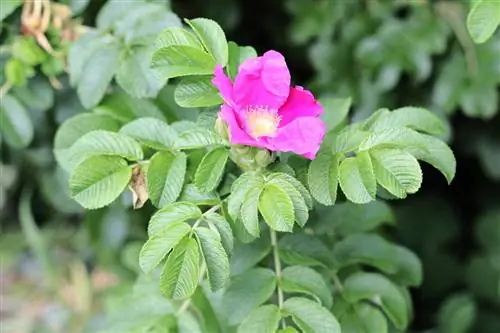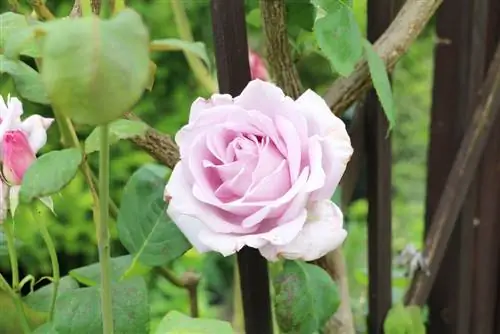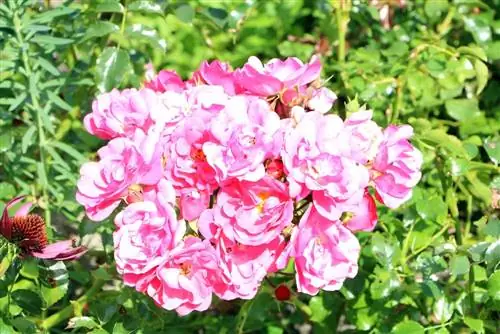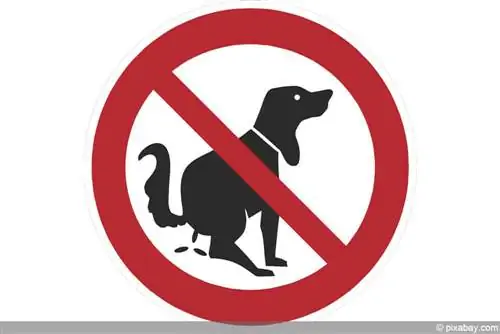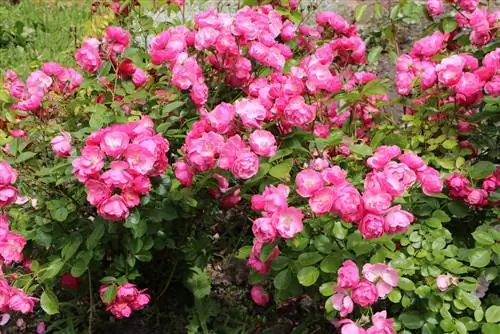- Author admin [email protected].
- Public 2023-12-17 03:39.
- Last modified 2025-01-24 12:45.
The dog rose (Rosa corymbifera) is very robust and blooms happily. It conjures up a touch of romance and offers protection to birds. Even though it's easy to care for, you can't do without it.
Annual thinning is sufficient
The most diverse types of wild roses are grouped under dog roses. They grow very quickly and are easy to care for and hardly need to be cut. Annual thinning is completely sufficient for a dog rose. Pruning is not necessarily necessary on a regular basis. The flowers of these roses always occur on the two-year-old wood, not on this year's shoots as with other roses. Heavy annual pruning would result in fewer flowers or, in the worst case, none at all. Thinning out is therefore completely sufficient and creates enough space for free development. But here too, it's not easy to cut straight away. There are a few things to consider when doing an annual thinning cut:
- Removal of all shoots and branches growing inwards
- cut out all branches older than two years
- completely remove diseased, dried, woody and bare branches
- Place the scissors directly at the base
- do not intersect this year's new shoots
- flower formation there in the following year
- cut brown branches back to the green and white core
- remove all other disturbing branches at the base
Tip:
However, diseased and dried branches should be removed regularly all year round. Old wood no longer produces flowers, but is susceptible to pests and a source of infection for diseases and only costs the dog rose a lot of energy. In addition, he althy branches can be used to propagate roses.
Cut every few years
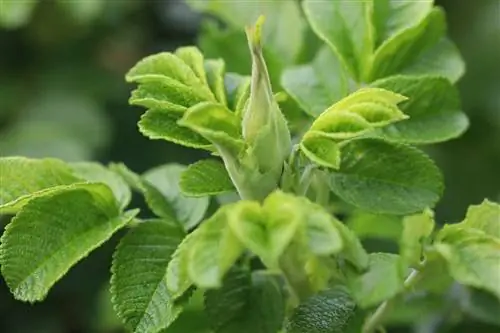
However, it is also advisable to prune dog roses more heavily every two to three years. This ensures that the roses remain he althy and delight with lush blooms for many years to come. In addition, this can also stop their sprawling growth, otherwise they would quickly displace other plants. But here too, caution is required when blending. The best way to proceed is as follows:
- Do not crush branches under any circumstances
- otherwise the penetration of pathogens is encouraged
- Avoid smooth cutting surfaces
- Make the cut slightly at an angle
- Prevention of rainwater deposits in wounds and rot, better wound healing
- Cut 5 mm above outward-facing eye or new growth
- Always cut away from the eye
- cut older branches except for the third and fifth eye
- Short shoots from the previous year by only a third of the height
- remove dead and diseased wood completely
The wood can usually be disposed of in the compost. However, this does not apply to diseased and dry wood. In order to avoid the spread of diseases and thus the infestation of he althy dog roses, it should either be disposed of with residual waste or, if possible, simply burned.
Tip:
As with pruning other types of roses, the same applies to dog roses: always cut weak shoots more heavily and always shorten all strong shoots just a little.
Spring best time
Although an annual thinning cut can be done all year round, this and the pruning should be done every two to three years in the spring. This is the best time for this, the wounds can close quickly. As with all types of roses, the time when the forsythia is blooming at the end of March is, of course, always dependent on the weather, and is the optimal time for blending the roses. In any case, care must be taken to ensure that no longer lasting frost is to be expected. The days should be dry, frost-free and warm, shortly before budding begins.
Note:
Straight shoots with rose hips look very decorative in winter and they are also an important source of food for local birds during the cold season.
Rejuvenation through radical cutting
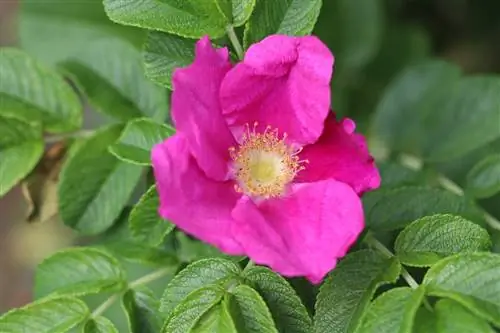
Dog roses also need radical pruning approximately every four to five years. In this way, the rose bushes can be rejuvenated and ultimately prevent baldness and a reduction or even lack of flower production. At the same time, regular growth is stimulated. Although these wild roses are generally easy to cut, there are still a few things you should keep in mind
- complete pruning by a quarter to half of the plant height
- Pruning on frost-free days in late autumn
- ideal October to early December
- Place the scissors at a slight angle
- cutting over outward-facing sleeping eye
- Distance 5 mm
Care after pruning
After pruning, you should also think about caring for the resulting wounds. This is the only way to prevent pathogens from penetrating the wound unhindered.
There are various options for treating larger wounds
- Apply wound closure agent to wound with a brush or
- Cover wound with dark foil
- Removal only after the wound has been closed
Use the right tool
When cutting roses of all kinds, including dog roses, you should only use flawless tools. This can prevent the transmission of diseases and the penetration of pathogens into the wound. It should be noted that before and after each cut
- a thorough cleaning is carried out
- use warm water and detergent or soap
- then dry well
- disinfect with high-percentage alcohol (from a pharmacy)
- only use sharp tools
- If necessary, sharpen properly
Tip:
It is best to use special rose scissors, sharp secateurs or hedge trimmers to trim a dog rose. For thinning out bushes that are more than two years old, a pair of sharp secateurs is sufficient.
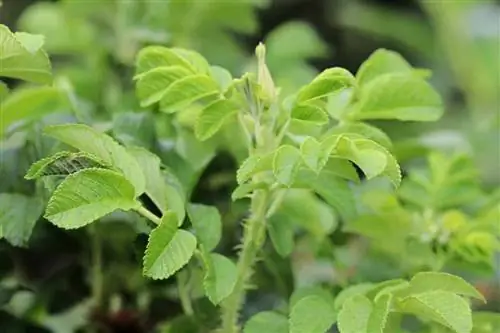
In addition, you should also think about your own protection, because the spines of dog roses are very hooky and strong. The branches are covered with it all around. If left unprotected, they can lead to injuries. In any case, long-sleeved, thick outerwear and trousers should be worn, as well as sturdy shoes. Of course, gloves are always an advantage when pruning and other work.

